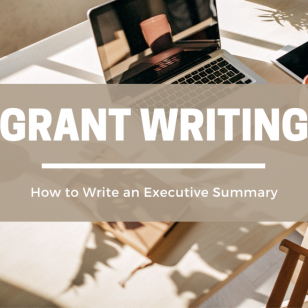By Kelsey Boudin
President and Founder, Southern Tier Communications Strategies, LLC
Grant applications today take many different forms. Funders may require specific formatting or submission methods. They may prefer you to present information or answer questions in a certain way.
The depth of information required can range from general to highly specific. Individual funders may ask for information in a variety of ways. No matter the requirements, there are typically eight parts of a full grant proposal.
Let’s Break Down the Key Parts of a Grant Proposal
A strong grant strategy sets your organization up to answer everything grantmakers need to know. Here’s a general breakdown.
1. Organizational Overview
Introduce your organization and confidently describe its mission, vision and reasons for existing. Grant professionals often refer to this information as “boilerplate.” It rarely changes from proposal to proposal.
- Mission: Your organization’s purpose, what it does, how and why. It should summarize your key activities in alignment with a defined set of organizational values.
- Vision: What your organization aspires to achieve — a future world in which your mission is accomplished.
- Organization History: When your organization was established, where it now operates and key accomplishments.
The organizational overview prepares funders to accept you and your activities as legitimate, at first glance. Keep them reading on. After all, funders fund the organization.
2. Grant Narrative
The proposal narrative is often the most extensive part of a grant application. It’s time consuming — but done right, it should be. Whether it’s requesting general operating funds or support for a specific project, the narrative explains in detail the who, what, when, where, why and how of the thing for which you need funding.
You must verbalize what your organization intends to do, the steps needed, and the anticipated outcomes of success. Many grant funders have a list of specific questions they expect you to answer completely. They may begin with an executive summary. Some want simply a general overview how much you want, what you’ll do with it, and why.
Here’s your chance to be a storyteller and orient the grant reviewer toward a solution. Bring out your inner journalist. Give a face to your mission. Recount success stories. Highlight, if possible, individual stories of how you’ve helped people, communities and systems in need. Tell their stories well.
Narratives almost always include a needs statement — or this may be its own section. Either way, you’ll be asked to use verifiable data to justify the need for funding not only within your organization but within the community and constituents you serve. Acknowledge the people or systems your organization serves wouldn’t otherwise be able to afford or access what they need. These data and information may include:
- Demographics
- Internal figures
- Community trends
- Testimonials
- Statements from stakeholders and authority figures
Make your narrative memorable. Grant reviewers are at first impressed by facts and figures (they’re vital to your application’s success). But data soon takes a backseat to your words expressing how those facts and figures may be positively impacted.
(Beware: Many narratives today include character or word limits. Craft them succinctly and wisely.)
3. Work Plan
Grant work plans build upon the narrative to explain exactly what will be done, when and by whom. They explain individual objectives and outcomes — and more importantly the tactics that will be used to get there. Depending on the application process, the work plan may be a form provided to neatly lay out the strategy, or you may be asked simply to express this in paragraph form.
A strong work plan amplifies the overall project goal. It should list, in order, objectives (the general overview for improvement), outcomes (specific improvements experienced as a result), and activities needed to get there. In logical progression, list the outputs (efforts taken), project staff (those completing the efforts), start dates and end dates.
These are your grant deliverables. Done well, your work plan will make clear what will be done, by whom, when and toward which objective.
4. Evaluation
Grant evaluators want to know how you will evaluate success. Your nonprofit initiative is only as powerful as the deliverables you describe and how you intend to measure them.
Who measures your deliverables? How? Will program staff take attendance at a community meeting? Will they distribute a post-survey or quiz gauging knowledge gained? Or is success determined only by the completion of a construction project or hiring of qualified staff?
Indicate the metrics by which your initiative should be judged, and who will collect and report the results.
5. Sustainability
Ah, yes, the dreaded sustainability question. Many grant processes seek funding to initiate a program or general funds to “keep the lights on.” Problem is, none of us have a crystal ball for looking out a year, two years, five years into the future. Still, funders want to know how your program will be sustainable — and returning time and again to ask for continued funding is rarely the right answer.
Your organization may have match funding to contribute toward the project, or perhaps revenue from program participation fees. Maybe you’ll collect sponsorship fees from nearby businesses. Sometimes the presence of initial grant funding allows organizations to leverage further funds later. There’s power in numbers, and some grantmakers and community benefactors are impressed by nonprofit initiatives in which others have “skin in the game.”
So express how, once funded, the organization’s or program’s operation will continue through ongoing efforts for support. (Helpful hint: Organizational longevity is itself a sign of stability. If the organization and its programs have existed and persisted for years, it stands to reason continual fundraising is a strong suit.)
6. Budget
Your nonprofit requests money and support. That charity isn’t a gift. It’s the grantmaker’s investment in fulfilling a mission benefiting many. The funder won’t invest in an initiative without a strong fiscal plan governing expenditures.
Grant funders want to know:
- How much will be spent
- By whom
- When
- With which vendor(s)
Prepare such documentation and present your program budget in a way that’s easy to understand and justify.
Some funders will require grant budgets be submitted in provided templates or formats. Others require only a document listing expenditures and incomes including other pending/anticipated/secured grant resources or match funds.
7. Budget Narrative
Your funder now sees what your organization proposes to spend. Now justify the cost. Many funders require verification that grant recipients have thoroughly researched fiscally responsible purchases, secured competitive bids for products/services, and followed legal procedures.
Most importantly, they want to know why the expenditure is necessary. Is a new hire or contractor necessary to handle workloads otherwise impossible under current staff levels? Does your initiative require significant administrative oversight, planning, community marketing or public relations to achieve goals?
Explain your reasoning.
8. Supplementary Documentation
Most grant processes examine supplementary documents to assess your organization’s eligibility, legitimacy and readiness for funding. Grantmakers want an in-depth look at your organizational capacity, leadership and finances.
Most grant applications require documents establishing your IRS nonprofit status and strong financial footing. These often include:
- 501(c)(3) determination (or equivalent)
- IRS 990 and W9 forms
- EIN (tax ID) and DUNS numbers
- SAM.gov registration (and other state/federal grant registrations, if applicable)
- Annual budget
- Third-party financial audit
- Organizational chart
- Board roster
- Chief executive/key staff resumes and accomplishments (curriculum vitae)
Some grantmakers also want to know your organization’s capacity and track record for community outreach, stakeholder engagement and communications. Not surprisingly, many want to verify you have the experience and infrastructure to thank them properly, often in the local media. Documentation may include:
- Monthly, quarterly and/or annual reports
- Board communications
- Press coverage
- Testimonials and program data
Ensure each is updated regularly and compile all documents for ready access.
Prepare to Deliver Each Part of a Grant Proposal
You must be prepared to invite funders to participate in your mission. To entice investment from funders backing your mission you must check all their boxes, delivering each part of the grant proposal.
While individual specifications may differ, most grant processes require similar information. Compiling a “blanket proposal” beforehand is often a helpful exercise to prepare organizational, messaging and documentation.
Writing a single grant can be a hefty process. Compiling a volume of proposals to enhance your chances of winning serious grant funding is even more daunting. Contact an experienced grant-writing consultant to help your organization shoulder the burden.








Artificial Intelligence in Strategic Communications: AI Isn’t Enough on Its Own - Grand River Agency
August 8, 2023 @ 3:29 pm
[…] spew out hundreds of words in just seconds for your digital marketing blog, social media presence, grant proposal or whatever. Notice I said “spew,” as the resulting content is merely a regurgitation of […]